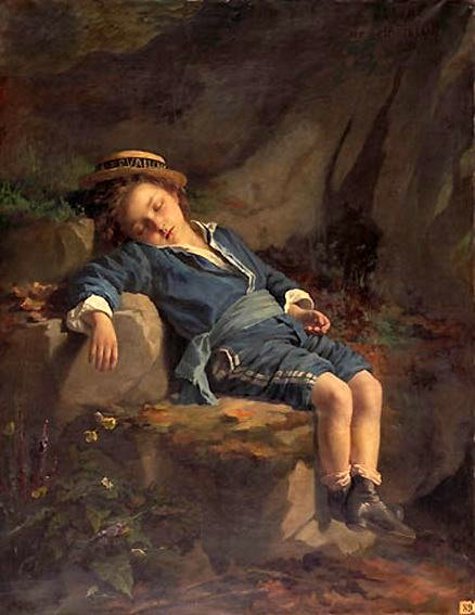|
Zoé-Laure De Chatillon
Zoé-Laure de Chatillon, née Delaune (1826–1908) was a French painter. Chatillon was born in Chambray but moved to Paris, where she showed works at the Paris Salon during the years 1851–1887, . and exposed at Giroux in Paris in 1856. She was a student of Léon Cogniet, and married Jules François Henri de Châtillon, subprefect of Châteaudun, the 8 April 1850. She was possibly related to Auguste de Châtillon, a French painter who travelled to New Orleans, as several of her paintings have been identified as depicting people from New Orleans. As a member of the French delegation of female artists, she exhibited paintings at the Woman's Building at the World's Columbian Exposition in 1893 in Chicago in the ''Woman's building. Her painting ''Sleeping Child'', shown at the Salon of 1878, was included in the 1905 book ''Women Painters of the World''. Chatillon died in Clarens, Vaud. She received a number of imperial orders, among them are the ''Jeanne D'arc vouant ses armes à ... [...More Info...] [...Related Items...] OR: [Wikipedia] [Google] [Baidu] |
Carcassonne
Carcassonne (, also , , ; ; la, Carcaso) is a French fortified city in the department of Aude, in the region of Occitanie. It is the prefecture of the department. Inhabited since the Neolithic, Carcassonne is located in the plain of the Aude between historic trade routes, linking the Atlantic to the Mediterranean Sea and the Massif Central to the Pyrénées. Its strategic importance was quickly recognized by the Romans, who occupied its hilltop until the demise of the Western Roman Empire. In the fifth century, it was taken over by the Visigoths, who founded the city. Within three centuries, it briefly came under Islamic rule. Its strategic location led successive rulers to expand its fortifications until the Treaty of the Pyrenees in 1659. Its citadel, known as the Cité de Carcassonne, is a medieval fortress dating back to the Gallo-Roman period and restored by the theorist and architect Eugène Viollet-le-Duc in 1853. It was added to the UNESCO list of World Heritage S ... [...More Info...] [...Related Items...] OR: [Wikipedia] [Google] [Baidu] |
